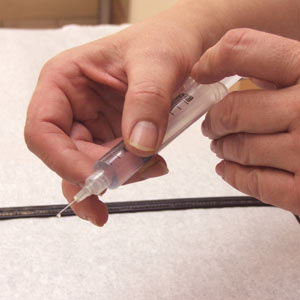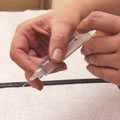Description of the procedure
Cortisone injections are used to help relieve pain caused by inflammatory conditions when medications and physiotherapy alone do not provide adequate relief. These conditions include osteoarthritis, rheumatoid arthritis, tendonitis, and bursitis. Cortisone works by reducing inflammation. It is injected directly into the affected area (usually a joint).
Doctors perform this procedure in an office or clinic. A local anesthetic may be used.
When should this procedure be performed?
Doctors may perform the procedure if treatment with medications (e.g., painkillers) and physiotherapy has not relieved specific muscle or joint pain. Some doctors perform the procedure on a monthly basis, while others recommend using it only a limited number of times in an area causing pain.
Why is this procedure performed?
Cortisone injection therapy is recommended when muscle and joint pain interferes with quality of life and mobility. Reducing the pain and improving mobility may help restore a person's ability to do daily activities and enjoy pastimes.
Are there any risks and precautions?
Although cortisone injections are generally considered safe, there are certain risks. If a doctor does not correctly target the muscle or joint, damage to nerves or tendons is possible although this is extremely rare. People with darker skin may experience some changes in skin colour at the injection site. There is also a risk of bleeding or infection at the injection site. Some people may experience flushing or sweating if a higher dose of cortisone is used. For people with diabetes, cortisone injections may increase blood sugar levels.
These side effects should go away with time; however, if they persist or become bothersome, talk to your doctor.
Repeating the procedure has its own risks. Corticosteroids may lead to a number of side effects with prolonged use over many years. These include loss of bone density (leading to weaker bones) or cataracts.
If you are concerned about any symptoms following this procedure, speak to your doctor. Take the time to be sure you understand all the risks of complications and side effects as well as any precautions you or your doctor can take to avoid them. Be sure your doctor understands all your concerns.
What happens during the procedure?
Your doctor will ask you to sit or stand in a certain position to best target the muscle or joint. He or she will then inject the medication into the area.
The medication is sometimes mixed with a local anesthetic to numb the area and provide almost instant relief. Injection into a muscle or joint that already causes you trouble may be painful. Let your doctor know if you are allergic to local anesthetics.
How should I prepare for this procedure?
Before having this procedure, discuss the advantages, disadvantages, long-term risks and consequences associated with the procedure with your doctor. Be sure you fully understand what will happen and are comfortable with your doctor’s answers to your questions.
Let your doctor know if you are currently taking any medications and follow your doctor's instructions. Often doctors recommend that you do not take any blood thinning medications for a few days before the procedure. You should also let your doctor know if you have diabetes as cortisone can temporarily cause an increase in blood sugar in people with this condition. Occasionally, your doctor may have to adjust your medications for diabetes.
Tell your doctor or prescriber about all prescription, over-the-counter (non-prescription), dietary supplements, and herbal medications that you are taking. Also tell them about any medication allergies and medical conditions that you may have.
Ask your doctor or pharmacist whether you need to stop taking any of your medications before the procedure.
What can I expect after the procedure?
Many people have some immediate relief from their pain after the injection. This happens because the anesthetics in the injection instantly numb the area. Some people also experience redness and a feeling of warmth in the chest and face after injection.
A few hours after the injection, some pain may return and this can last up to 48 hours, occasionally feeling even worse than before the injection. Applying ice to the area can help relieve soreness. The corticosteroids in the injection begin to work a few days later, often bringing long-lasting relief to the joint or muscle. For best results, the affected joint should not bear any weight for 24 to 48 hours immediately following the injection. Bearing weight or repeating movements may cause the medication to leak out of the joint.
In very rare cases, the joint or muscle may appear red or swollen, liquids may leak from it, or you may develop a fever or chills. Report these symptoms to your doctor immediately as it is possible you have an infection that requires medical attention.
Results
Corticosteroid injections bring pain relief to the affected area that can last for a number of months.
All material copyright MediResource Inc. 1996 – 2024. Terms and conditions of use. The contents herein are for informational purposes only. Always seek the advice of your physician or other qualified health provider with any questions you may have regarding a medical condition. Source: www.medbroadcast.com/procedure/getprocedure/Cortisone-Injection


